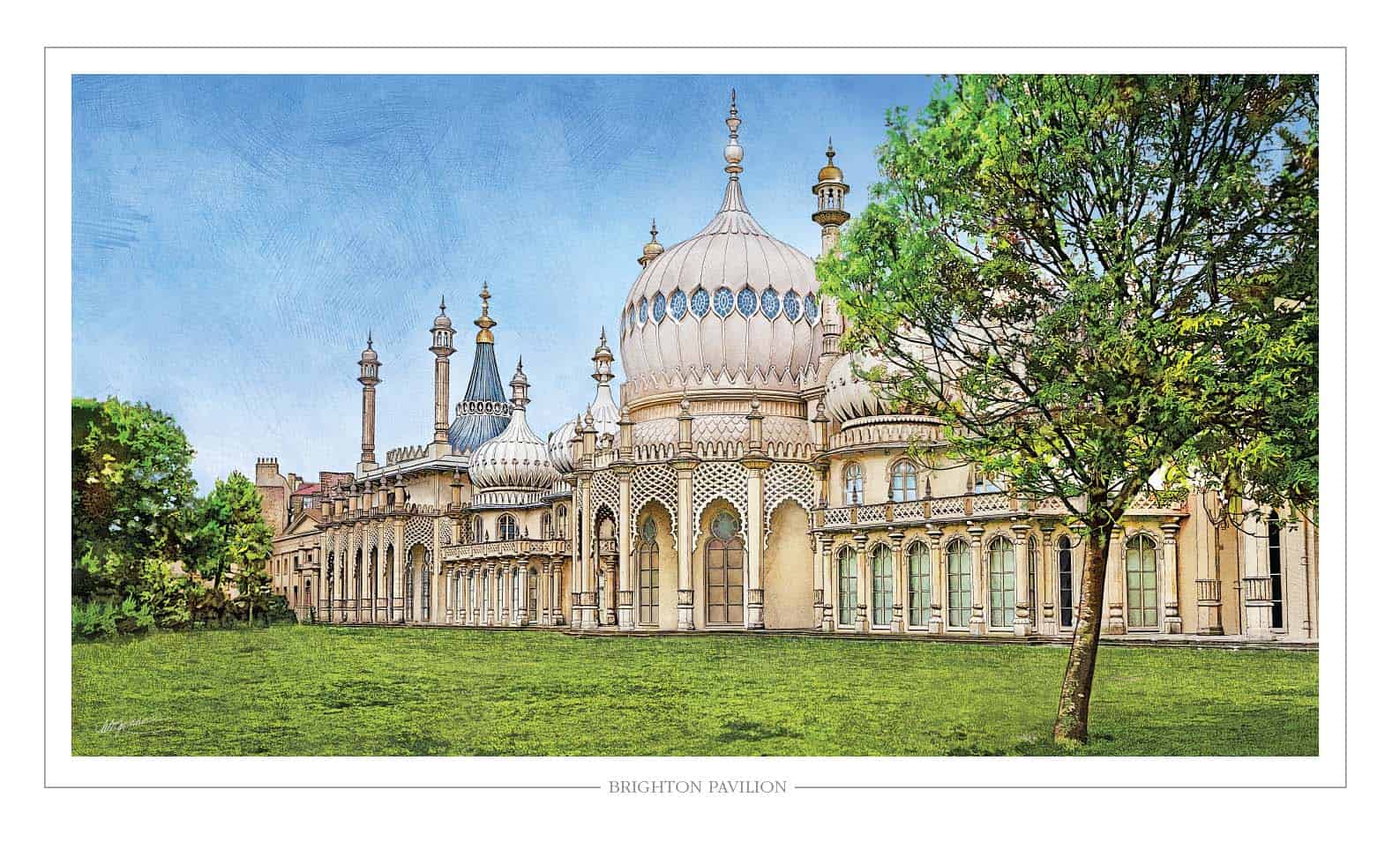Brighton Pavilion
(Click on the image for a large view)
The Royal Pavilion has a colourful history stretching back over 200 years. Built as the seaside pleasure palace for King George IV, it has also served as a civic building, First World War hospital, and has become a true icon of Brighton.
The Prince of Wales, who later became George IV, first visited Brighton in 1783, at the age of 21. The seaside town had become fashionable as a result of the residence of George’s uncle, Prince Henry, Duke of Cumberland, whose tastes for fine cuisine, gambling, the theatre, and general fast living the young prince shared, and with whom he lodged in Brighton at Grove House. In addition, the Prince of Wales was advised by his physician that the seawater and fresh air would be beneficial for his gout. Remote from the Royal Court in London, the Pavilion was a discreet location for the Prince to enjoy private liaisons with his long-time companion, Maria Fitzherbert.
After the death of George IV in 1830, his successor King William IV also stayed in the Pavilion on his frequent visits to Brighton. Queen Victoria, however, disliked Brighton and the lack of privacy at the Pavilion. Brighton became accessible to Londoners by rail in 1841, increasing its popularity with the masses. In addition, the Pavilion was cramped for her growing family. Famously, Queen Victoria disliked the constant attention she attracted in Brighton, saying “the people here are very indiscreet and troublesome”.
The purchase of the Royal Pavilion from Queen Victoria, by Brighton, marked the beginnings of the site’s attraction as a tourist destination. The Royal Pavilion has been changed from a private residence to a public attraction under civic ownership. Today, around 400,000 people visit the Royal Pavilion annually.

